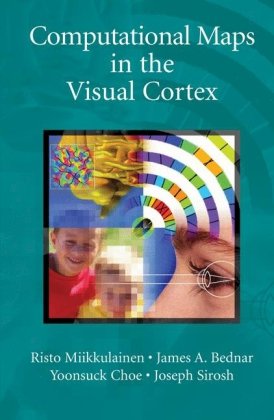

Most ebook files are in PDF format, so you can easily read them using various software such as Foxit Reader or directly on the Google Chrome browser.
Some ebook files are released by publishers in other formats such as .awz, .mobi, .epub, .fb2, etc. You may need to install specific software to read these formats on mobile/PC, such as Calibre.
Please read the tutorial at this link: https://ebookbell.com/faq
We offer FREE conversion to the popular formats you request; however, this may take some time. Therefore, right after payment, please email us, and we will try to provide the service as quickly as possible.
For some exceptional file formats or broken links (if any), please refrain from opening any disputes. Instead, email us first, and we will try to assist within a maximum of 6 hours.
EbookBell Team

5.0
20 reviews
ISBN 10: 0387501363
ISBN 13: 9780387501369
Author: Risto Miikkulainen, James A Bednar, Yoonsuck Choe, Joseph Sirosh
Biological structures can be seen as collections of special devices coordinated by a matrix of organization. Devices are dif?cult to evolve and are meticulously conserved through the eons. Organization is a ?uid medium capable of rapid adaptation. The brain carries organizational ?uidity to the extreme. In its context, typical devices are ion channels, transmitters and receptors, signaling pathways, whole individual neurons or speci?c circuit patterns. The border line between what is to be called device and what a feat of organization is ?owing, given that in time organized s- systems solidify into devices. In spite of the neurosciences’ traditional concentration on devices, their aiming point on the horizon must be to understand the principles by which the nervous system ties vast arrays of internal and external variables into one coherent purposeful functional whole — to understand the brain’s mechanism of organization. For that purpose a crucial methodology is in silico experimentation. Computer simulation is a convenient tool for testing functional ideas, a sharp weapon for d- tinguishing those that work from those that don’t. To be sure, many alternatives can only be decided by direct experiment on the substrate, not by modeling. However, if a functional idea can be debunked as ?awed once tried in silico it would be a waste to make it the subject of a decade of experimentation or discussion. The venture of understanding the function and organization of the visual system illustrates this danger.
Foundations
Introduction
Biological Background
Computational Foundations
Input-driven Self-organization: LISSOM – A Computational Map Model of V1
Development of Maps and Connections
Understanding Plasticity
Understanding Visual Performance: The Tilt Aftereffect
Constructing Visual Function: HLISSOM – A Hierarchical Model
Understanding Low-Level Development: Orientation Maps
Understanding High-Level Development: Face Detection
Perceptual Grouping: PGLISSOM – A Perceptual Grouping Model
Temporal Coding
Understanding Perceptual Grouping: Contour Integration
Evaluation and Future Directions: Computations in Visual Maps
Scaling LISSOM Simulations
Discussion: Biological Assumptions and Predictions
Future Work: Computational Directions
Conclusion
Tags: Risto Miikkulainen, James A Bednar, Yoonsuck Choe, Joseph Sirosh, Computational, maps